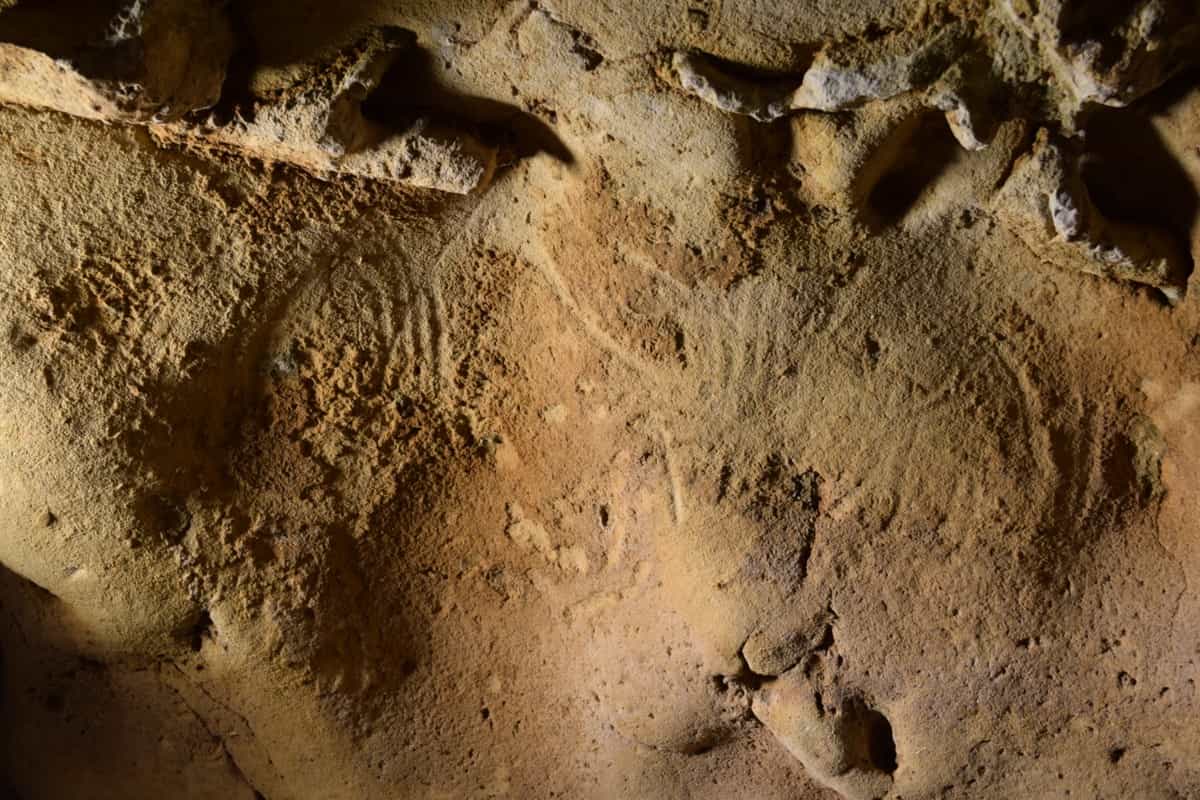
Scientists have recently discovered the oldest-known Neanderthal cave engravings, hidden beneath the French countryside for tens of thousands of years. These intricate patterns were deliberately created by our ancient relatives, challenging the prevailing notion of Neanderthals as simple beings and brutish creatures.
The discovery opens new doors to understanding the cognitive abilities and cultural richness of our closest evolutionary cousins.
Hidden art
To Paleolithic humans, the soft, chalky rock of cave walls must have looked like an inviting blank canvas. Caves are obvious shelters of choice for our hunter-gatherer ancestors. With them spending so much time inside these caves, it didn’t take long for people to engage in what humans do best: expressing themselves through symbolism and art.
But the human family is grand and rich. It doesn’t only include us, Homo sapiens, but also now-extinct relatives such as the Denisovans and the famous Neanderthals.
This is perfectly evidenced by the ancient cave etchings at La Roche-Cotard, a cave tucked deep in the wooded hillside above the Loire in France. The cave in question was first explored in the early 19th century, and it didn’t take long for archaeologists to find a treasure trove of prehistoric artifacts, charred animal bones, but also finger tracings.
The site is particularly famous for the so-called Mask of La Roche-Cotard, a proto-figurine possibly created by Neanderthals found inside the cave.
It was only recently, however, that the great significance of these seemingly mundane etchings came to light.
In a remarkable new study published in PLOS One, researchers claim they have evidence that these extraordinary engravings mark the oldest-known example of Neanderthal cave art.
The researchers meticulously analyzed, plotted, and created 3D models of these intriguing markings, comparing them with other wall markings of various kinds. Their findings confirm that these arch-shaped tracings and sinuous lines are not random scratches, but rather intentional products of human hands.
“The number of lines, their organization into panels, and the succession of these lines in the cave testify to a thoughtful and organized approach. These lines were not made at random,” Dr. Jean-Claude Marquet, the lead author of the new study, said.
This isn’t just some educated assumption. The researchers are certain of this because they’ve tried it out themselves. . Using various materials, including bone, wood, antler, and metal points, they recreated similar marks on the walls of another nearby cave.
Flooded numerous times by the Loire River during the Paleolithic era, the cave underwent a natural transformation. The river’s flooding carved out parts of the cave and deposited thick sediment that eventually sealed it off from the outside world. Erosion from wind and the hillside above further contributed to its complete covering.
The dating of deep sediment layers using optically stimulated luminescence dating reveals that the cave was sealed off at least 57,000 years ago. It was sealed for possibly as long as 75,000 years—long before Homo sapiens set foot in this part of Europe.
Prior to this discovery, the oldest cave engravings attributed to Neanderthals were abstract cross-hatching patterns found in Gorham’s Cave, Gibraltar, dated to 39,000 years ago.
There’s nothing surprising about any of this though. Scientists have found cave paintings — which can be considered an order of magnitude more complex than etchings — in three sites in Spain dating from 65,000 years ago, all attributed to Neanderthal artists.
A window into the minds of Neanderthals
Traditionally, Neanderthals were perceived as mere subsistence-driven beings, solely concerned with their immediate needs. However, more recent archaeological evidence shows this is anything but the case. In reality, Neanderthals were seemingly just as sophisticated and resourceful as modern humans who shared the same hunter-gatherer lifestyles.
For instance, Neanderthals regularly engaged in cultural practices, such as burial rituals and art. Previously, researchers uncovered a pendant made from ancient eagle talons and cave paintings in Spain made by Neanderthal artists. Inside a cave in the Harz Mountains of central Germany, researchers found a 51,000-year-old deer bone engraved with symbols by a Neanderthal craftsman.
Indeed, humans and Neanderthals were so alike that they borrowed technology from one another in Western Europe during the short period they used to co-exist. And of course, the most important evidence of a union between our two species rests inside almost each and every one of us — inside our DNA. All non-African people alive today have between 1% and 4% of their genomes inherited from Neanderthals, a byproduct of interbreeding between the two closely related species.
While the meaning behind these abstract symbols remains shrouded in mystery, one thing is clear: the Neanderthals possessed a level of sophistication and creativity that goes beyond what we once believed.
As we gaze upon these ancient finger paintings, we are reminded that the artistic spirit has been ingrained in our human lineage for millennia.
“There are very clear clues that confirm that only Neanderthals can be the artists,” Jean-Claude says. “Most importantly, the cave entrance was closed thousands of years before Homo sapiens are known from the area. The artwork itself is probably even older, at around 75,000 years old.”






